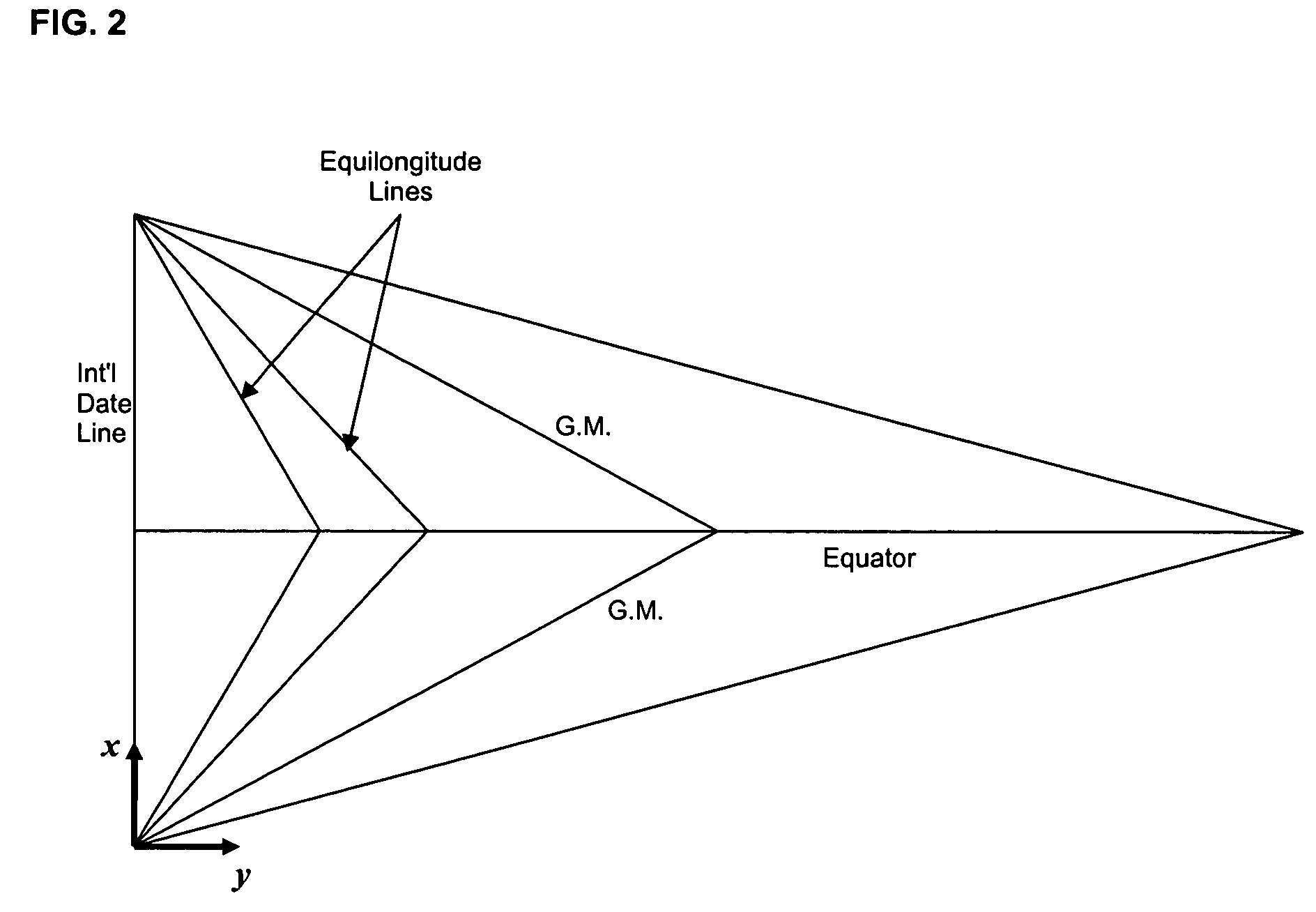Proximity search methods using tiles to represent geographical zones
a geographical zone and search method technology, applied in the field ofproximity search techniques, can solve the problems of insufficient accuracy, inability to perform accurate proximity searches, and inability to reduce the computational cost of distance calculations based on zip codes and postal codes, so as to achieve the effect of increasing the speed of execution, reducing the total number of distance calculations, and increasing the accuracy of proximity searches
- Summary
- Abstract
- Description
- Claims
- Application Information
AI Technical Summary
Benefits of technology
Problems solved by technology
Method used
Image
Examples
Embodiment Construction
[0022]Each geographic location in FIG. 1, which can be represented as latitude and longitude, may be mapped onto a point in FIG. 2. In fact, the map of FIG. 1 is divided into a plurality predefined geographical regions or areas, referred to as tiles, and all points contained in one tile map onto a single point in FIG. 2. A tile can have any configuration, but in the embodiment of the invention described herein, each such tile covers roughly the same area in FIG. 1 and all four sides of each such tile have the same fixed length. The formulas used for mapping a location in FIG. 1 that is defined by latitude and longitude onto a point in FIG. 2 are as follows:
LatQ=Int((latitude+90)*k / r+1); and
LongQ=Int((longitude+180)*k Cos (latitude / r+1),
where latitude and longitude values are expressed in degrees; k is a factor for converting a 1-degree arc measured with respect to earth's center into miles (k=2π*(earth's radius) / 360°=69.0933 miles / degree); r is the length of each side of a tile (in ...
PUM
 Login to View More
Login to View More Abstract
Description
Claims
Application Information
 Login to View More
Login to View More - R&D
- Intellectual Property
- Life Sciences
- Materials
- Tech Scout
- Unparalleled Data Quality
- Higher Quality Content
- 60% Fewer Hallucinations
Browse by: Latest US Patents, China's latest patents, Technical Efficacy Thesaurus, Application Domain, Technology Topic, Popular Technical Reports.
© 2025 PatSnap. All rights reserved.Legal|Privacy policy|Modern Slavery Act Transparency Statement|Sitemap|About US| Contact US: help@patsnap.com



